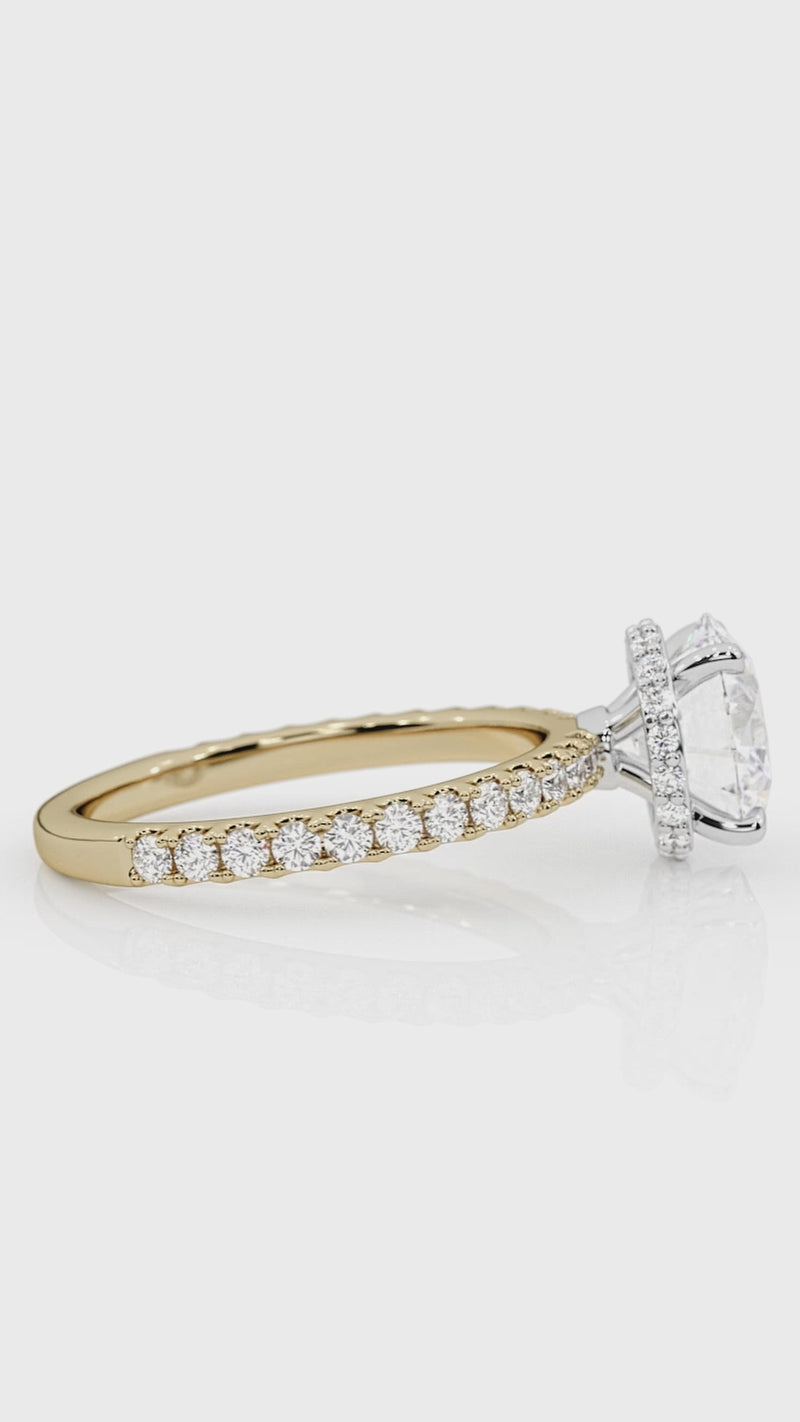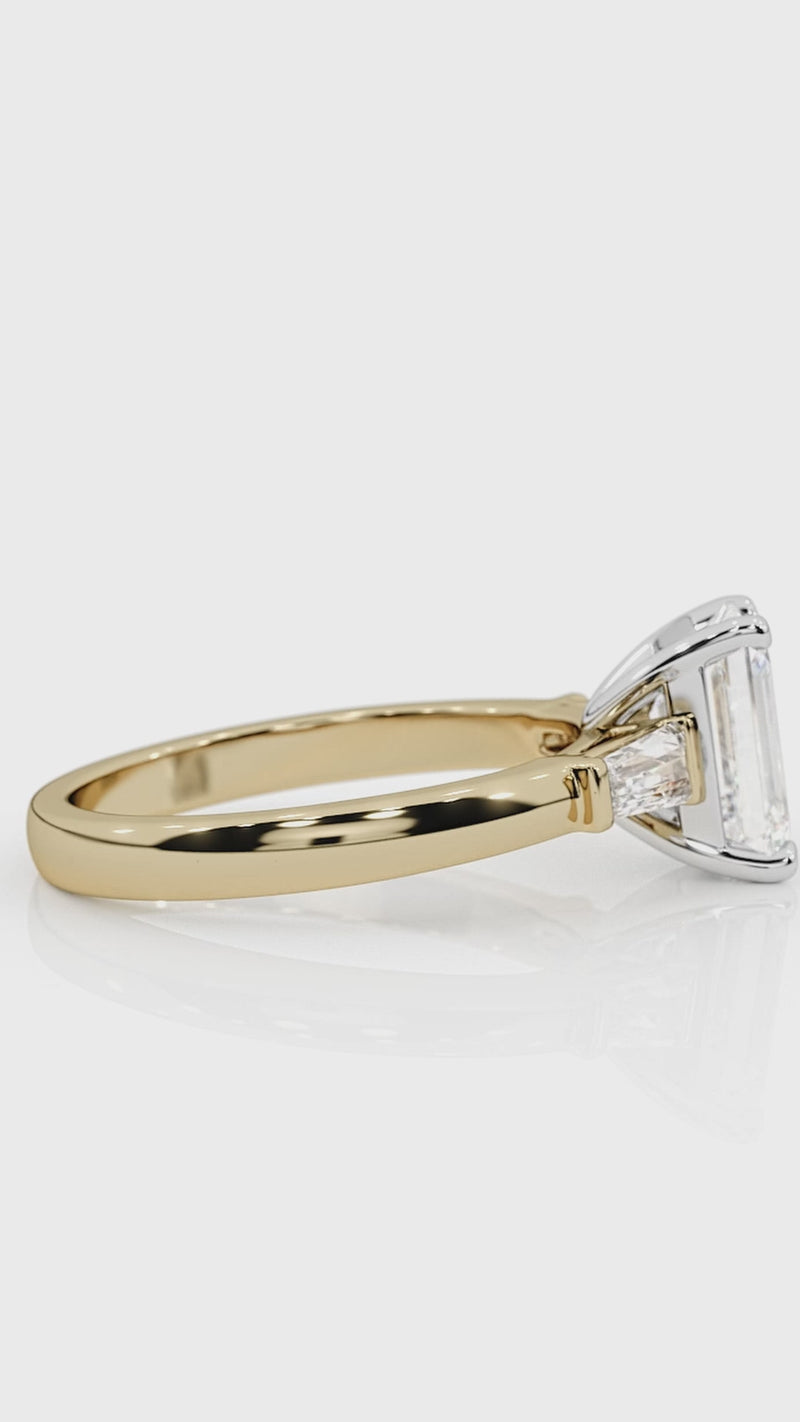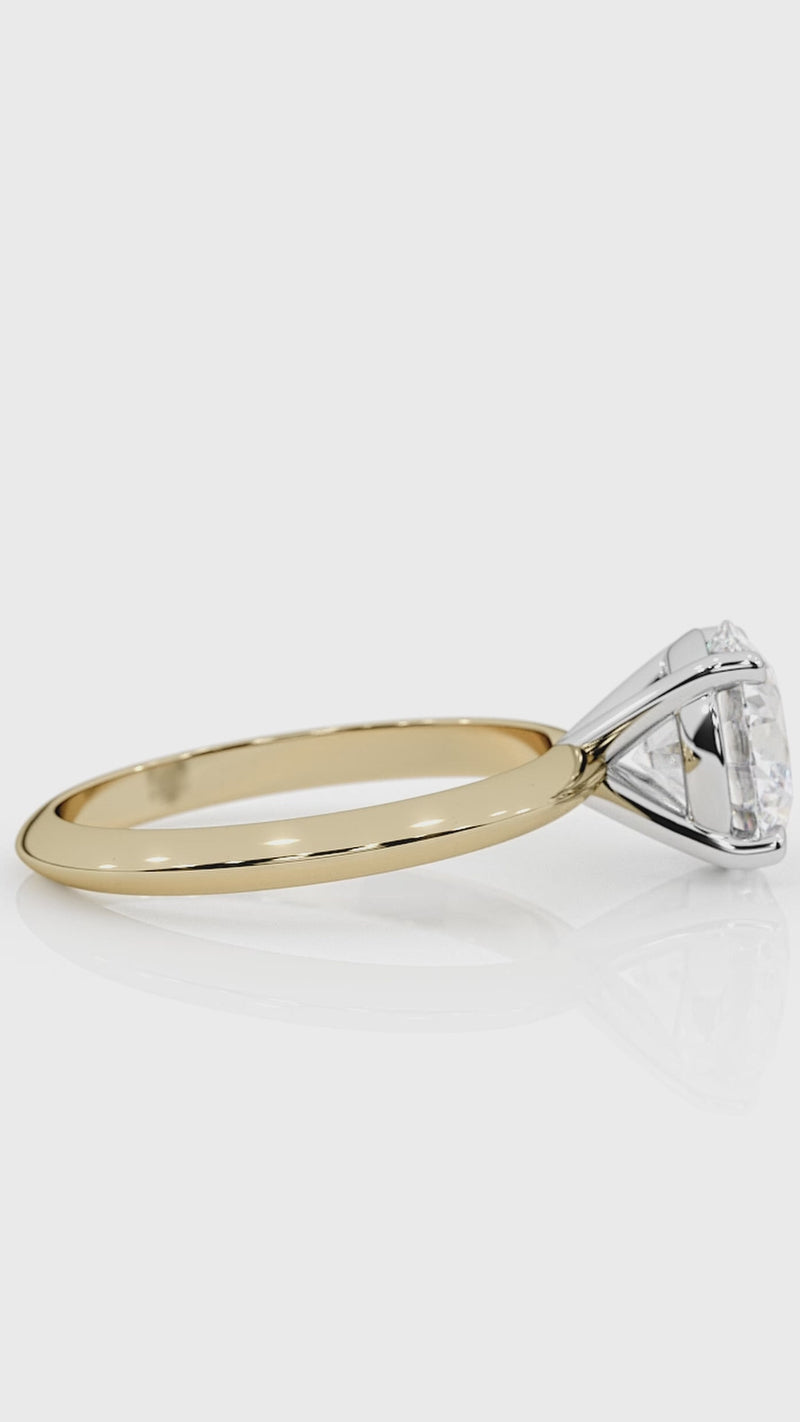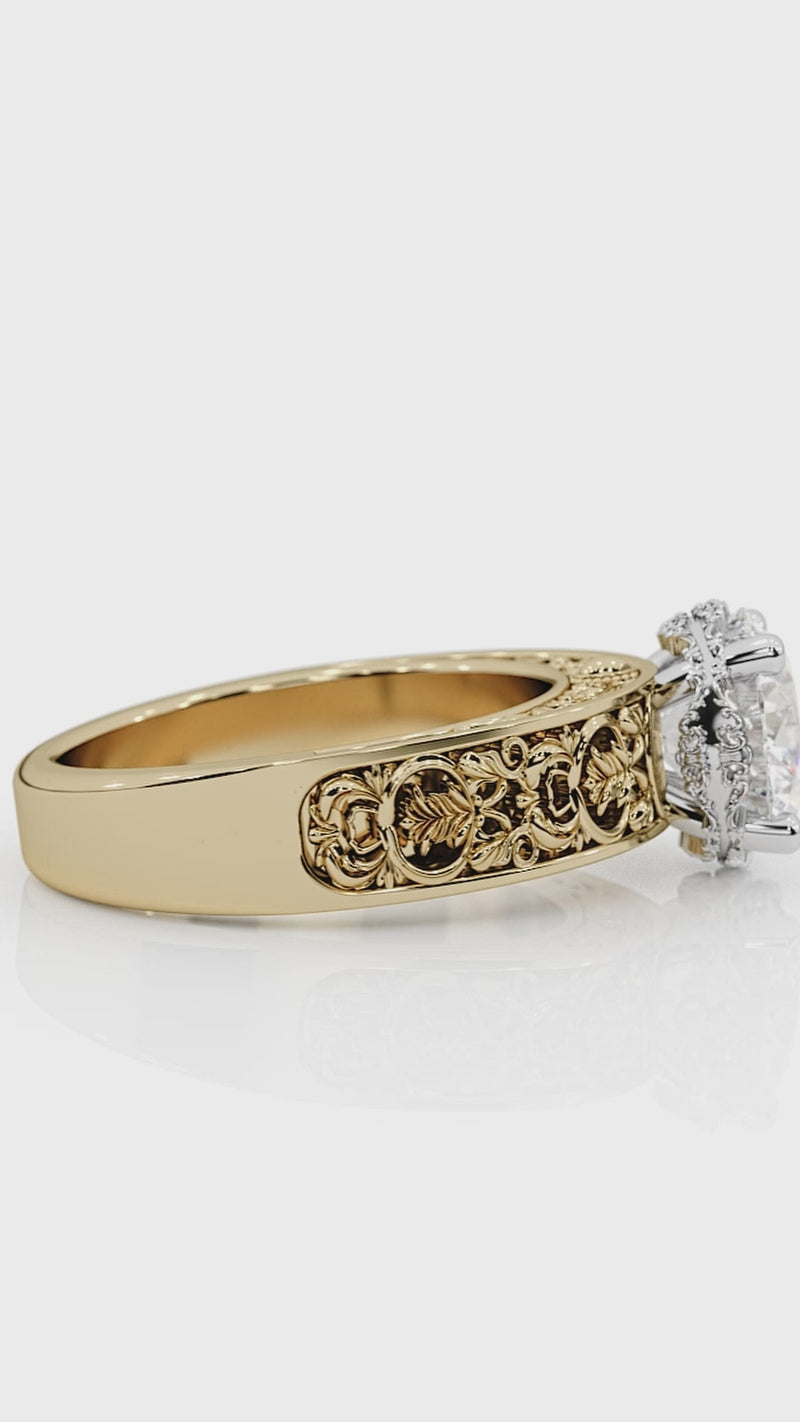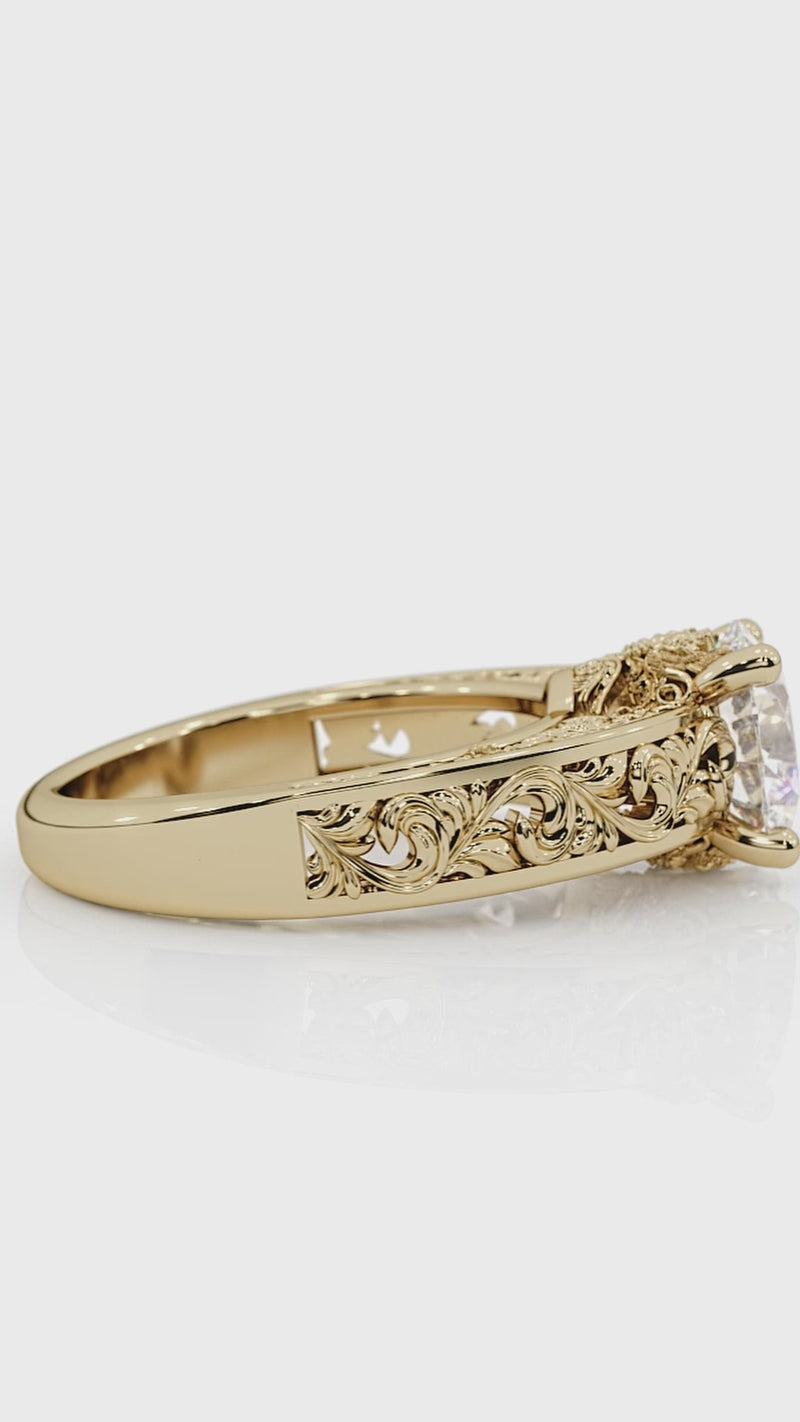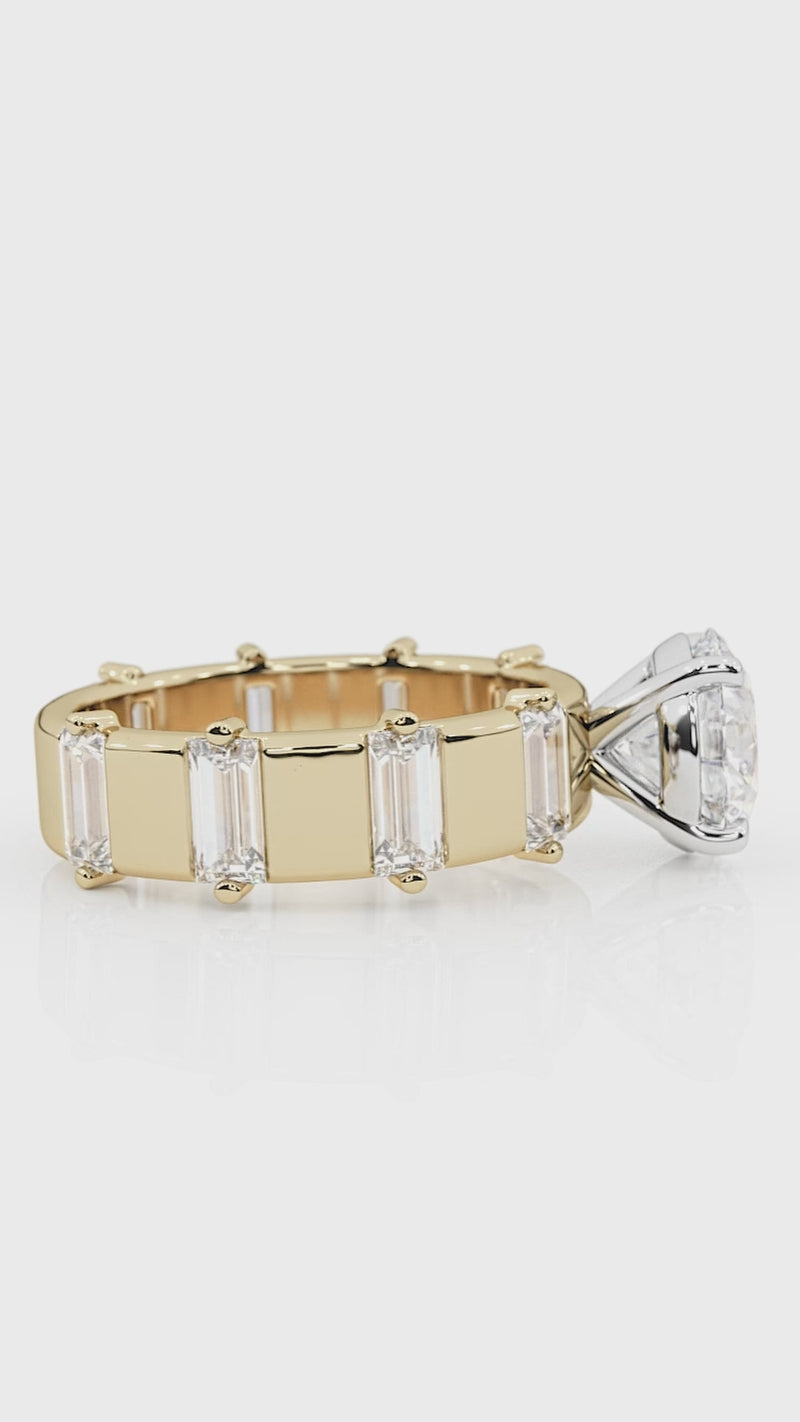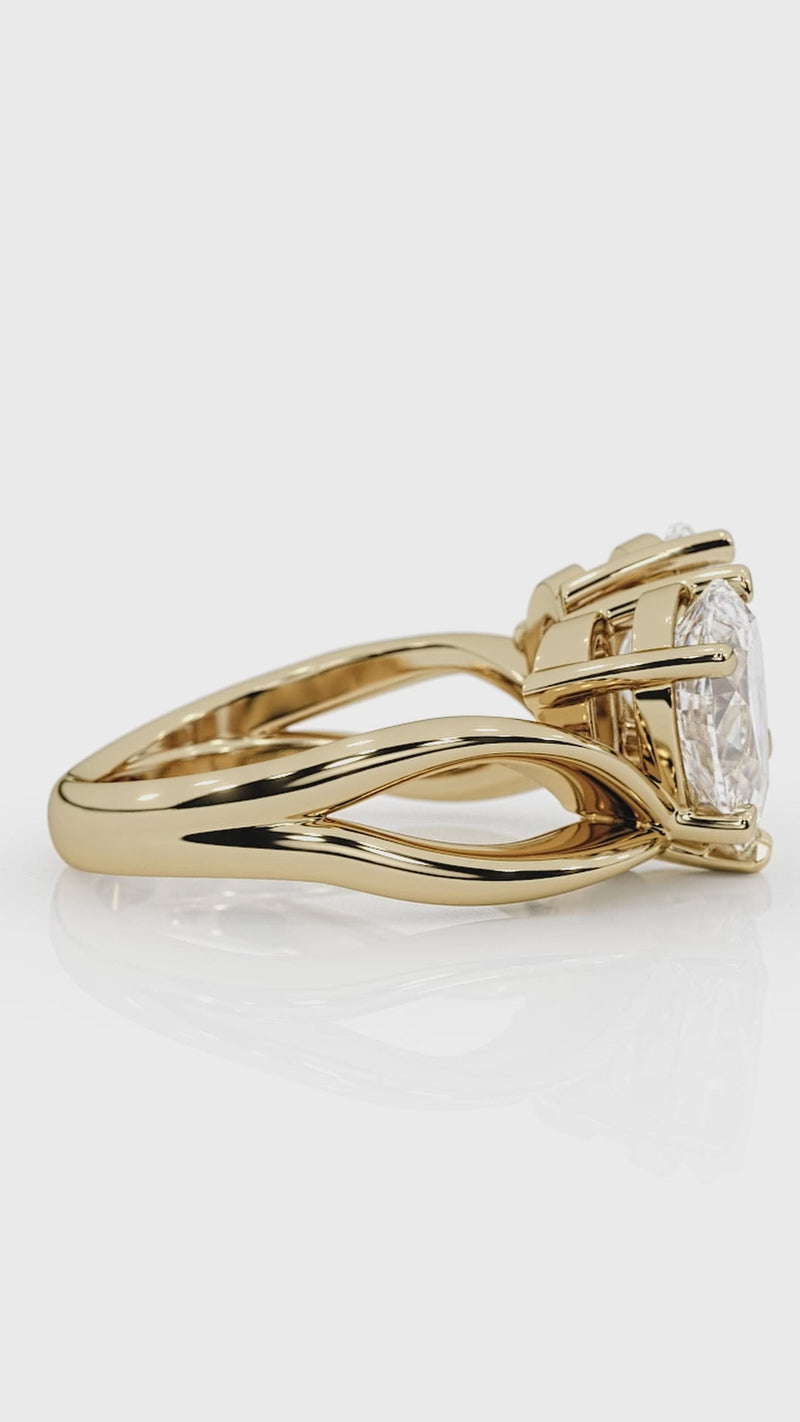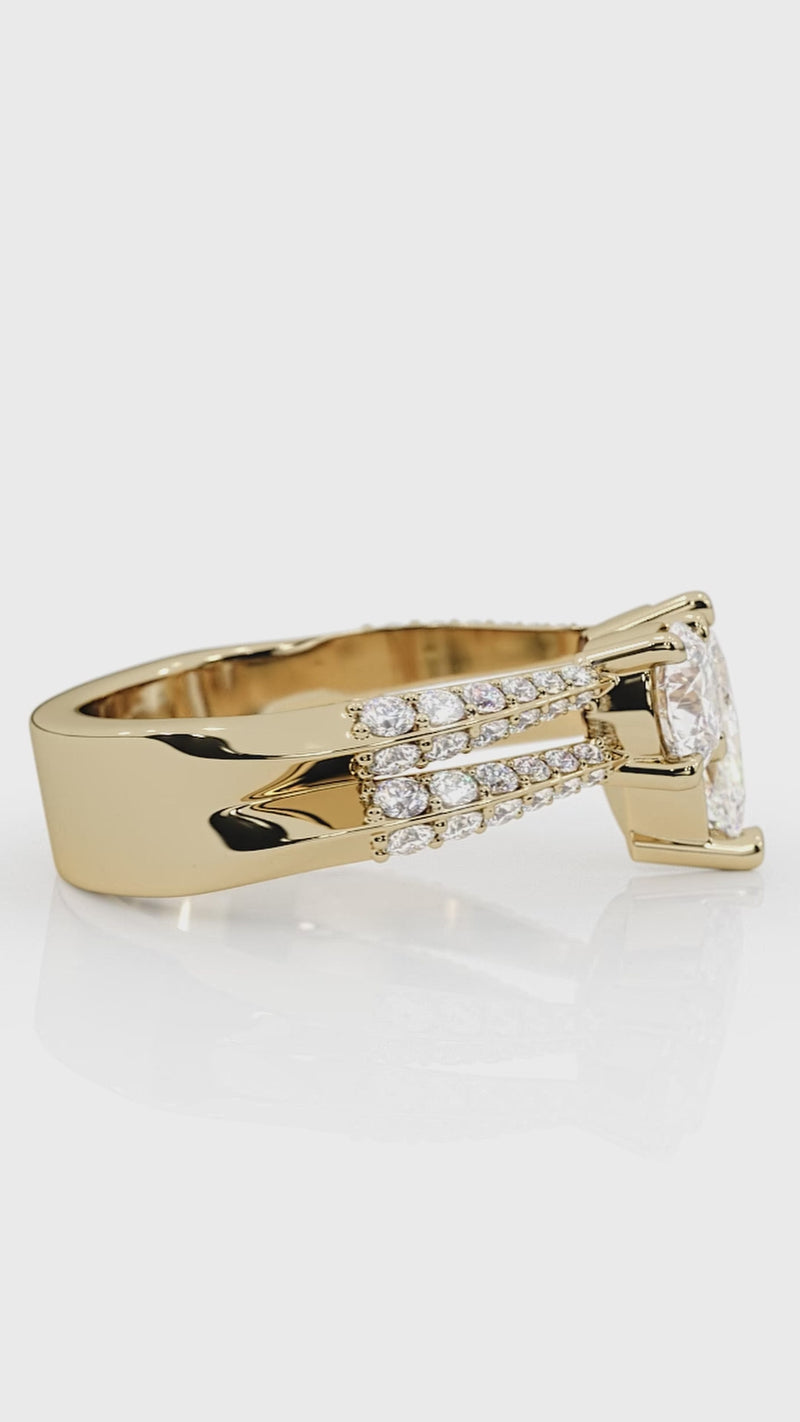Cut, the Most Important of the 4 Cs
When searching for that perfect diamond, most of us hear about the 4 Cs: Cut, Carat, Clarity, and Color. While each one certainly matters, cut is truly the single greatest determinant of a diamond’s sparkle, brilliance, and overall “wow” factor. A better-cut diamond unleashes dazzling flashes of light—often overshadowing even larger or higher-grade stones that lack an optimal cut. If a diamond is cut too deep or too shallow, the light that refracts from its prism simply does not create the same captivating spectacle. This begs the question: What makes a diamond’s cut so significant—and who first set the standard for the “ideal cut” that so many gemologists still reference today?
The story begins in 1919 with a Belgian diamond cutter and mathematician named Marcel Tolkowsky, whose groundbreaking research established the foundation of what we now call the “Ideal Cut.” His meticulous calculations identified the precise angles and facet proportions that best optimize a diamond’s ability to reflect and refract light. More than a century later, Tolkowsky’s principles still guide the industry, underscoring just how pivotal the right cut can be.
A Quick Look at the 4 Cs
Before we spotlight Tolkowsky’s contributions, let’s briefly revisit the 4 Cs:
- Cut – Reflects the way a diamond’s facets, angles, and proportions influence its light performance and sparkle.
- Carat – Measures the diamond’s weight (often perceived as size).
- Clarity – Assesses internal inclusions and external blemishes.
- Color – Ranges from colorless (D) to visibly tinted (Z).
Though all four combine to influence a diamond’s overall appearance and value, cut stands out as the ultimate game-changer for a diamond’s brilliance, fire, and scintillation.
Why Cut Matters More Than You Think
-
The Light Show
A diamond’s allure springs from the light that enters, bounces around inside (reflection and refraction), and then returns to your eye in a brilliant flash. If the diamond’s angles are not precise, light leaks out the sides or bottom of the stone, causing a dull, lifeless effect. -
Visual Impact Over Size
Many buyers fixate on carat weight, but a smaller diamond with an excellent cut can look more eye-catching than a bigger, poorly cut stone. Proper facet alignment allows the diamond to “face up” larger—an illusion driven by optimal light return. -
Balancing the Other Cs
A superb cut can help mask slight color tints or certain inclusions because the intense sparkle commands so much attention. This means you can choose a diamond with a slightly lower color or clarity grade without sacrificing overall brilliance, provided the cut is top-tier.
Marcel Tolkowsky: The Man Behind the “Ideal Cut”
A Revolutionary Thesis
In 1919, Marcel Tolkowsky published his doctoral thesis, “Diamond Design: A Study of the Reflection and Refraction of Light in a Diamond.” This rigorous, math-driven text detailed the exact angles, proportions, and facet arrangements that would produce the greatest possible light performance in a round brilliant diamond. At a time when there was relatively little scientific research guiding diamond cutting, Tolkowsky’s work was nothing short of revolutionary.
Core Principles of the Tolkowsky Ideal
-
Crown Angle (34–35°)
Tolkowsky calculated that a crown angle of roughly 34.5 degrees allows optimal dispersion (or “fire”), splitting white light into its spectral colors. -
Pavilion Angle (40–41°)
The pavilion angle (commonly around 40.75 degrees) is critical for bouncing the maximum amount of light back through the top of the diamond. Slight deviations can dramatically affect light return. -
Table Percentage (53–58%)
The “table” is the large, flat facet on the top of the diamond. Tolkowsky found that having the table around 53–58% of the diamond’s diameter optimizes both brilliance and fire. -
Symmetry and Proportions
Tolkowsky stressed that every facet should align precisely for the diamond to achieve the highest level of brilliance. As a result, a perfectly symmetrical stone with well-proportioned depths and angles will consistently out-sparkle one with misaligned or uneven facets.
Why Tolkowsky’s Research Endures
-
Data-Driven Foundations
Tolkowsky’s approach was heavily rooted in math and physics. He didn’t rely on guesswork; he tested and refined angles based on how light interacts with each internal facet. -
Longevity of Standards
Over a century later, many grading labs (like GIA and AGS) still use grading systems that align closely with Tolkowsky’s original “ideal” angles. Although modern technology and advanced modeling tools have made incremental adjustments, Tolkowsky’s baseline continues to be the gold standard. -
Unrivaled Light Performance
A properly proportioned Tolkowsky-style cut maximizes brilliance (white light), fire (colored sparks), and scintillation (flashes of light when the diamond moves). These three components define the quintessential “wow” factor.
The Science of Cutting a Diamond
1. Planning
Modern gemologists use 3D mapping to scan rough diamonds, searching for the best orientation that honors both Tolkowsky-inspired dimensions and the diamond’s natural shape. This step reduces waste while preserving the best light performance.
2. Cleaving or Sawing
Once the plan is set, lasers or specialized blades slice the rough stone into sections, if needed. This step creates smaller pieces that can be shaped into round brilliants or fancy cuts.
3. Bruting
The stone is gradually rounded, forming the basic shape of a round brilliant. For fancy shapes (e.g., princess, oval, cushion), cutters also start aligning major facets during this stage.
4. Faceting and Polishing
Through a series of careful cuts, the diamond’s facets—usually 57 or 58 for a standard round brilliant—are shaped and polished. The angles are fine-tuned to meet Tolkowsky’s or a similarly precise ideal, ensuring the maximum play of light.
Modern Grading of the Cut
Most reputable labs (like GIA) break down a round brilliant’s cut grade into categories—Excellent (or Ideal), Very Good, Good, Fair, and Poor. These grades evaluate:
- Proportions: Depth, table size, crown angle, and pavilion angle.
- Symmetry: Alignment of facets and the overall precision of the cut.
- Polish: The surface finish of the diamond’s facets.
It all ties back to Tolkowsky’s fundamental findings. While some labs might allow slightly broader variations in angles and table percentage, the best cuts typically cluster around Tolkowsky’s original guidelines.
Striking the Balance: Why Cut Is Worth the Investment
-
Bigger Impact for Your Budget
Rather than investing solely in a higher carat weight, you can often buy a slightly smaller (or “off-size”) diamond with an Ideal or Excellent cut and walk away with a more stunning gem—visually larger in its sparkle. -
Masking Minor Imperfections
A diamond with a top cut grade can reflect so much light that subtle color tints (say, G–H on the color scale) or small inclusions (in SI1–SI2 clarity) become harder to notice. This approach can save thousands of dollars compared to a high-carat, near-flawless stone with a mediocre cut. -
The “Forever” Factor
Diamonds are typically worn for a lifetime (and often passed down). Opting for a gem with ideal proportions means you’ll appreciate consistent brilliance and aesthetic value for decades, all thanks to Tolkowsky’s pioneering research.
Embracing Lab-Grown Diamonds
Lab-grown diamonds feature the same crystal structure as mined diamonds. The cutting principles remain the same: Tolkowsky’s formulas apply whether the diamond formed below Earth’s surface or in a state-of-the-art lab. If budget or environmental considerations come into play, lab-grown diamonds offer a more affordable, often eco-friendly alternative—without sacrificing that hypnotic sparkle, provided the cut follows ideal guidelines.
Pro Tips for Choosing a Diamond
-
Prioritize Cut Above All Else
Even a superb color or clarity grade can’t salvage a poorly cut stone. The cut is your top priority if you want that unforgettable scintillation. -
Seek GIA/AGS Certification
These labs provide detailed cut assessments, and you can often see how closely a stone’s proportions match Tolkowsky’s recommendations. -
Look for Light Performance Imagery
Some jewelers offer Hearts & Arrows or ASET imagery, giving you visual proof of facet precision and light return. -
Consider Round Brilliants First
If maximum sparkle is your goal, the round brilliant cut—based on Tolkowsky’s math—is still unmatched in uniform light performance. That said, fancy shapes can look incredible if cut carefully. -
Think About Your Budget Holistically
Dropping a bit on color or clarity but elevating your cut grade may yield a far more radiant diamond at a lower overall price. Remember: brilliance draws the eye more than a tiny inclusion or faint color.
Conclusion
For over a century, Marcel Tolkowsky’s meticulous calculations have guided diamond cutters worldwide, serving as the benchmark for what an “ideal cut” truly means. His mathematical precision and unwavering dedication to maximizing light performance revolutionized how we evaluate diamond proportions—even in an age of laser cutters and 3D modeling. By anchoring your diamond search around the cut, you’re not merely following industry jargon; you’re tapping into a legacy of scientific principles that guarantee the most mesmerizing sparkle.
So, whether you’re hunting for a timeless round brilliant or an avant-garde fancy shape, let Tolkowsky’s Ideal Cut be your north star. After all, cut is the first and most pivotal stop on your journey to owning a diamond that genuinely shines—in every sense of the word.


